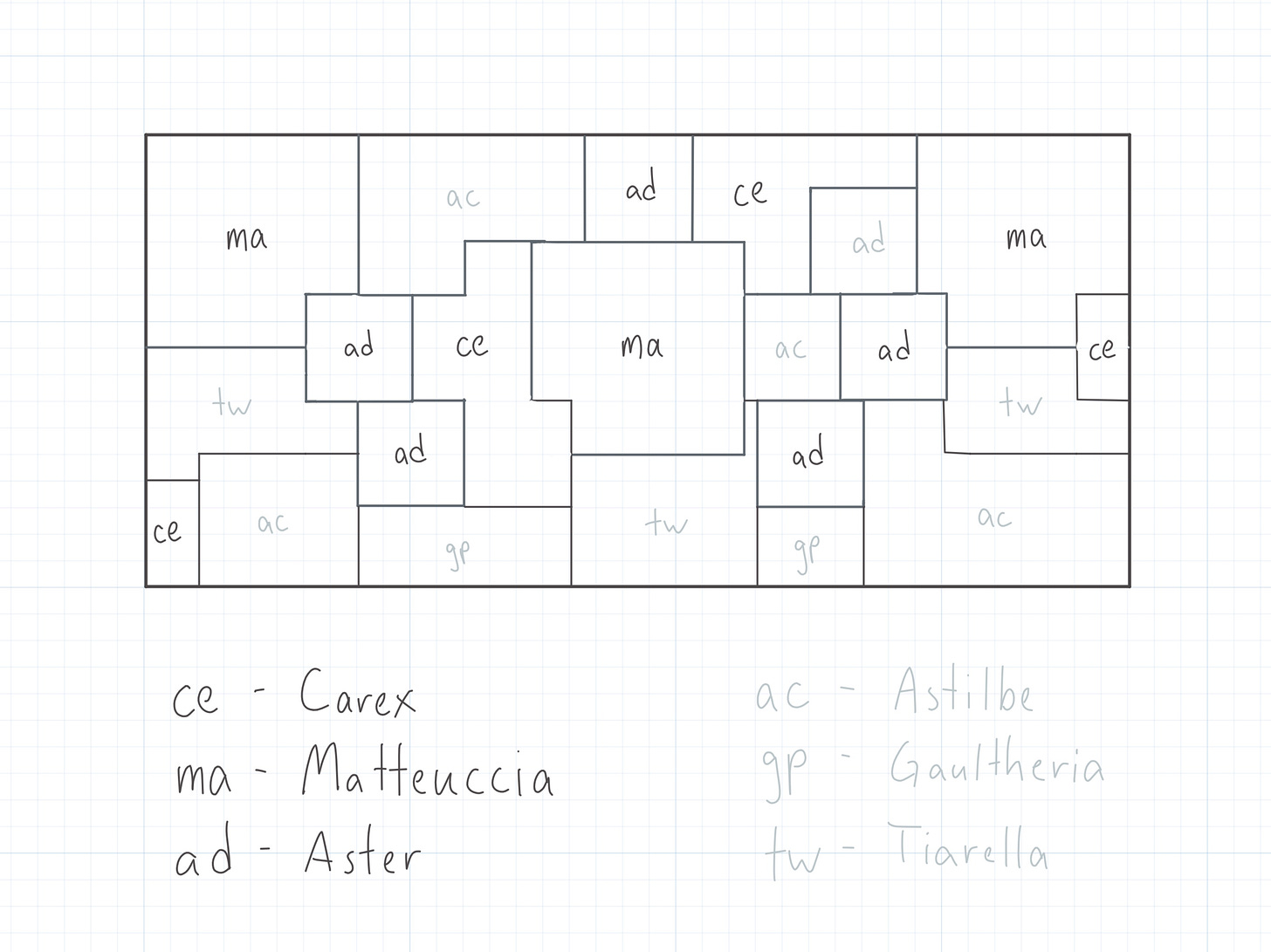Maackia 006: A small diversion
Hi! I’m a trench digging Nathan Langley and this is Maackia, a monthly newsletter that was supposed to be on gardens and design.
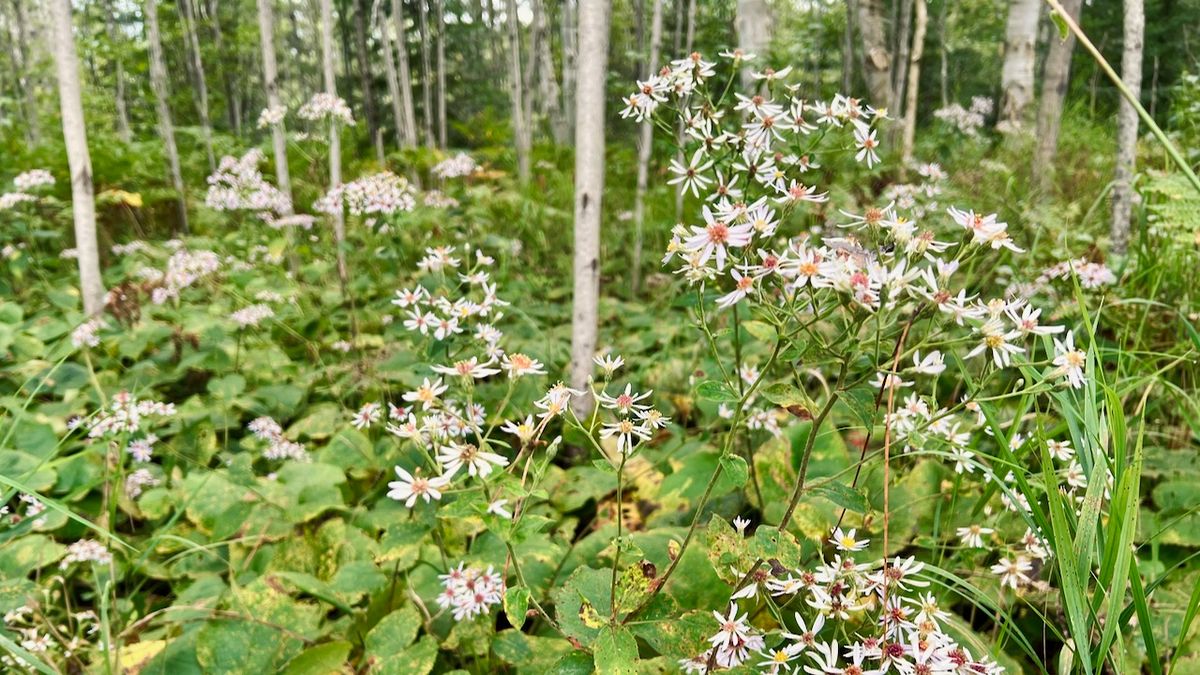
I have been sidetracked this past month with an unexpected foundation repair project around my garage and haven’t made much progress on any of the projects I wanted to work on. It is probably for the better though, as I have to put a new french drain in that will cut across one of the areas I wanted to plant. Opportunity for a makeshift rain garden? Time will tell.
Regardless I find myself somewhat time constrained and haven’t been able to write as much as I would have liked. I did, however, manage to put together a new recipe and complementary video before my plans went sideways. Small steps. Hopefully I will be back to form for next months newsletter.
Until then, enjoy the recipe!
the recipe
Northern Steps
The inspiration for this recipe was a small raised bed area next to the front entrance of my house. The space is small - roughly 4 x 2m in total. The core of the garden is made up of a fern and a sedge: Matteuccia struthiopteris and Carex eburnea. These two plants provide the main green backdrop and textures held throughout the space, while the other plants used add a sprinkle of interest in spring, summer, and fall.
Ingredients:
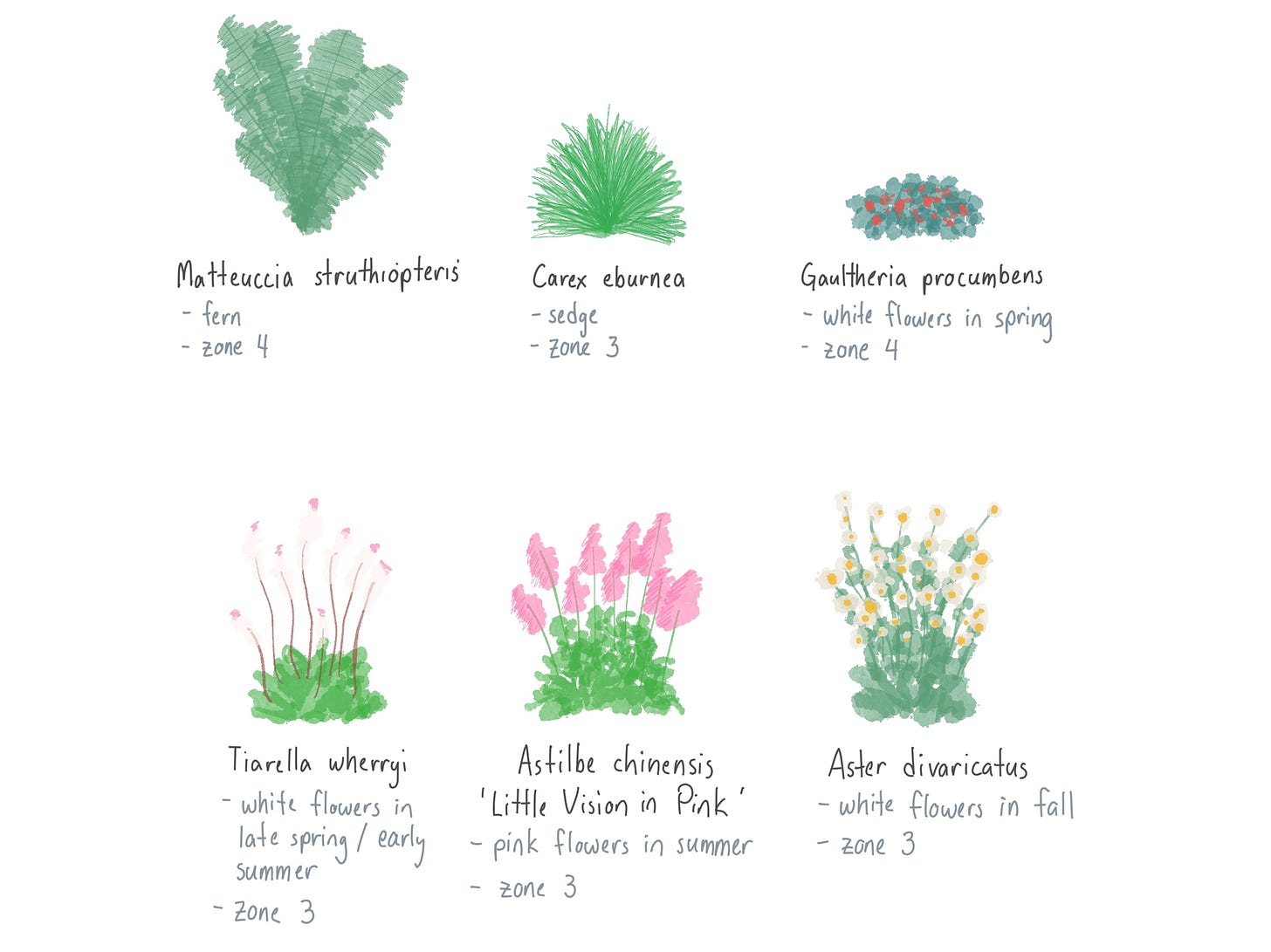
Seasons:
Overview
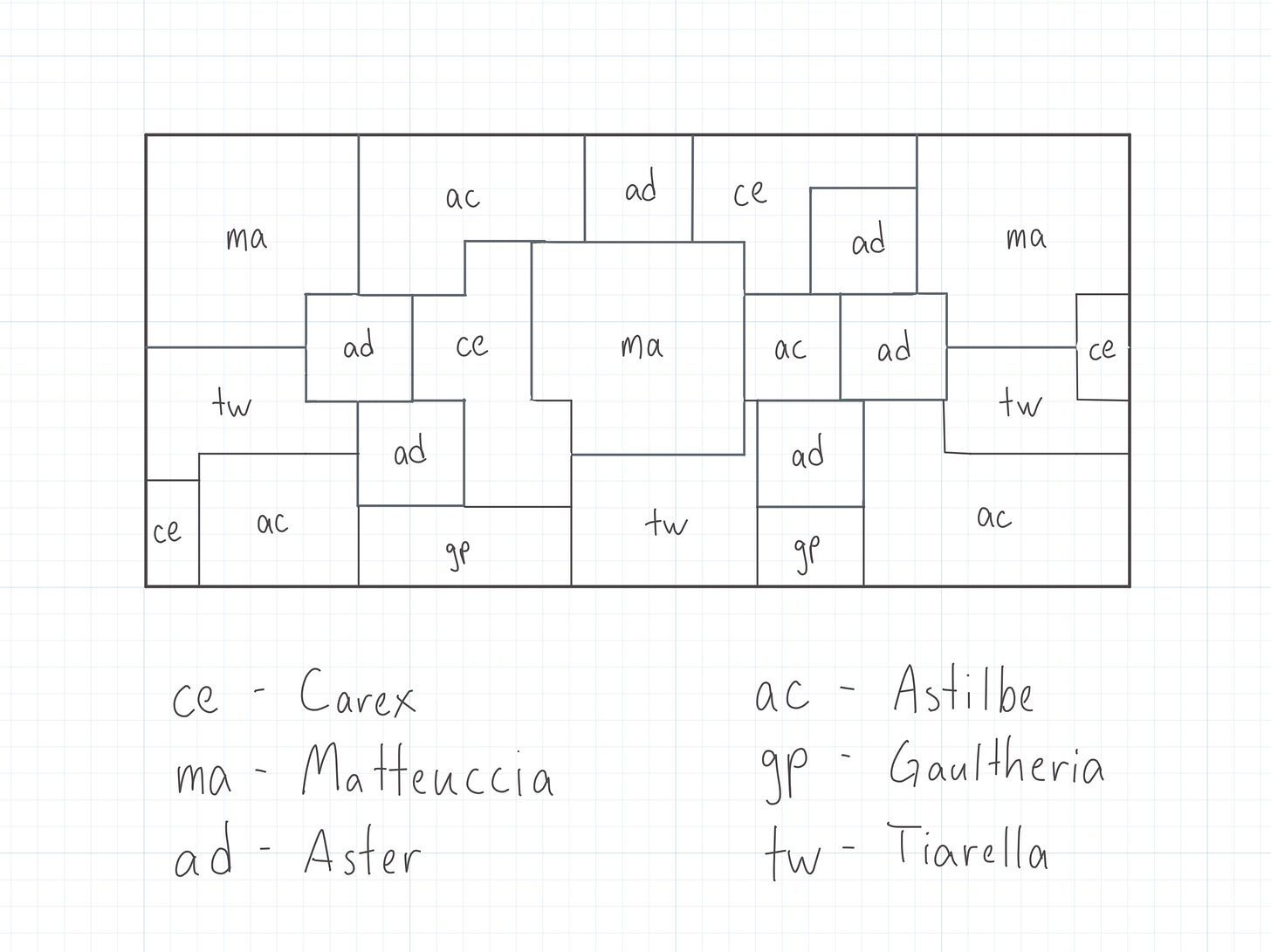
Spring
The floral interest in spring is very delicate, with Tiarella wherryi being the most obvious plant in bloom. However if you get close enough to the garden bed, you will also see very small flowers on Gaultheria procumbens.
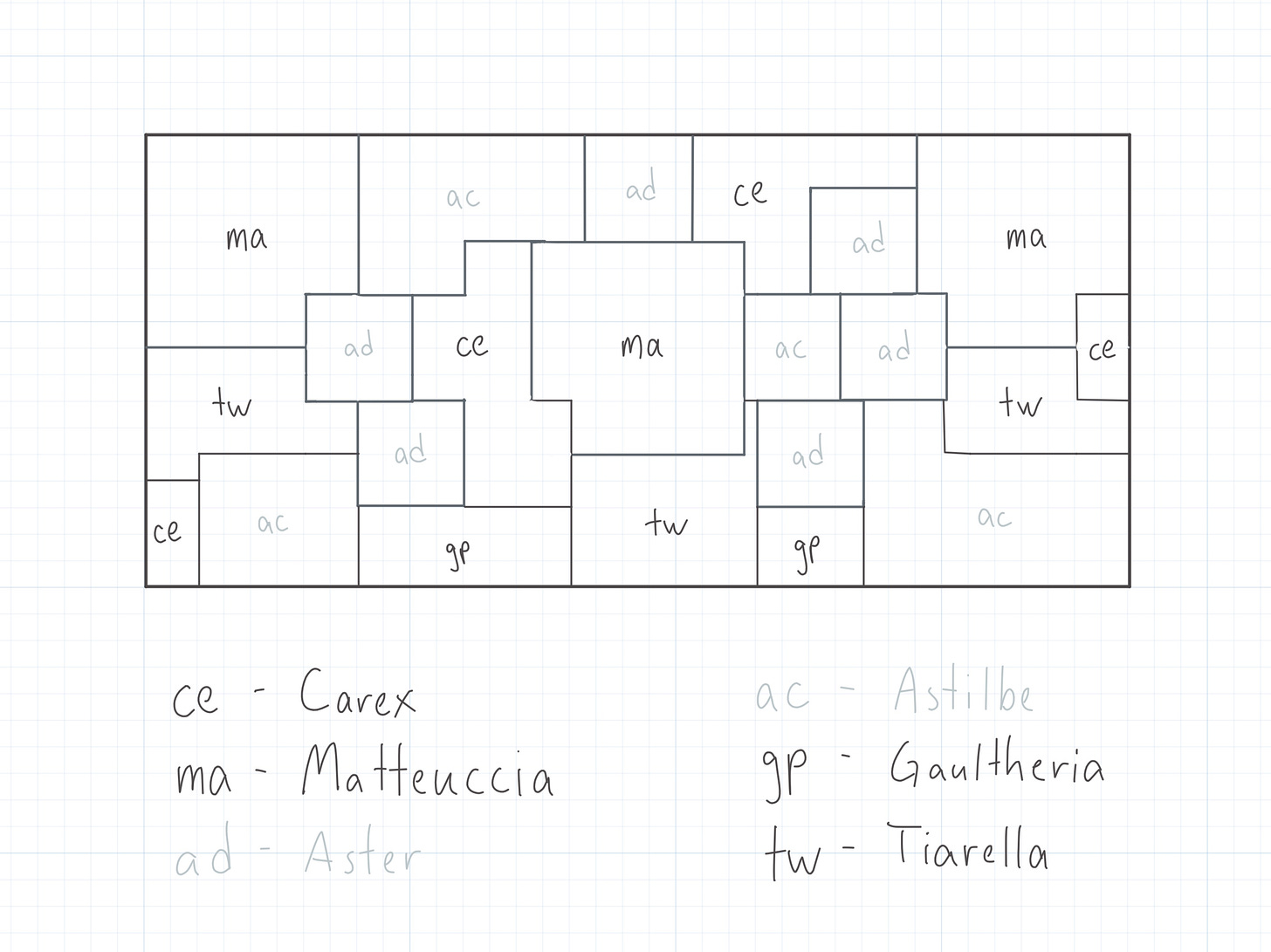
Summer
Summer has, as usual, the most striking flower in the garden. In this recipe it comes from Astilbe chinensis ‘Little Vision in Pink’. Tiarella wherryi will also be in flower at the beginning of summer, but will quickly fade into the background.
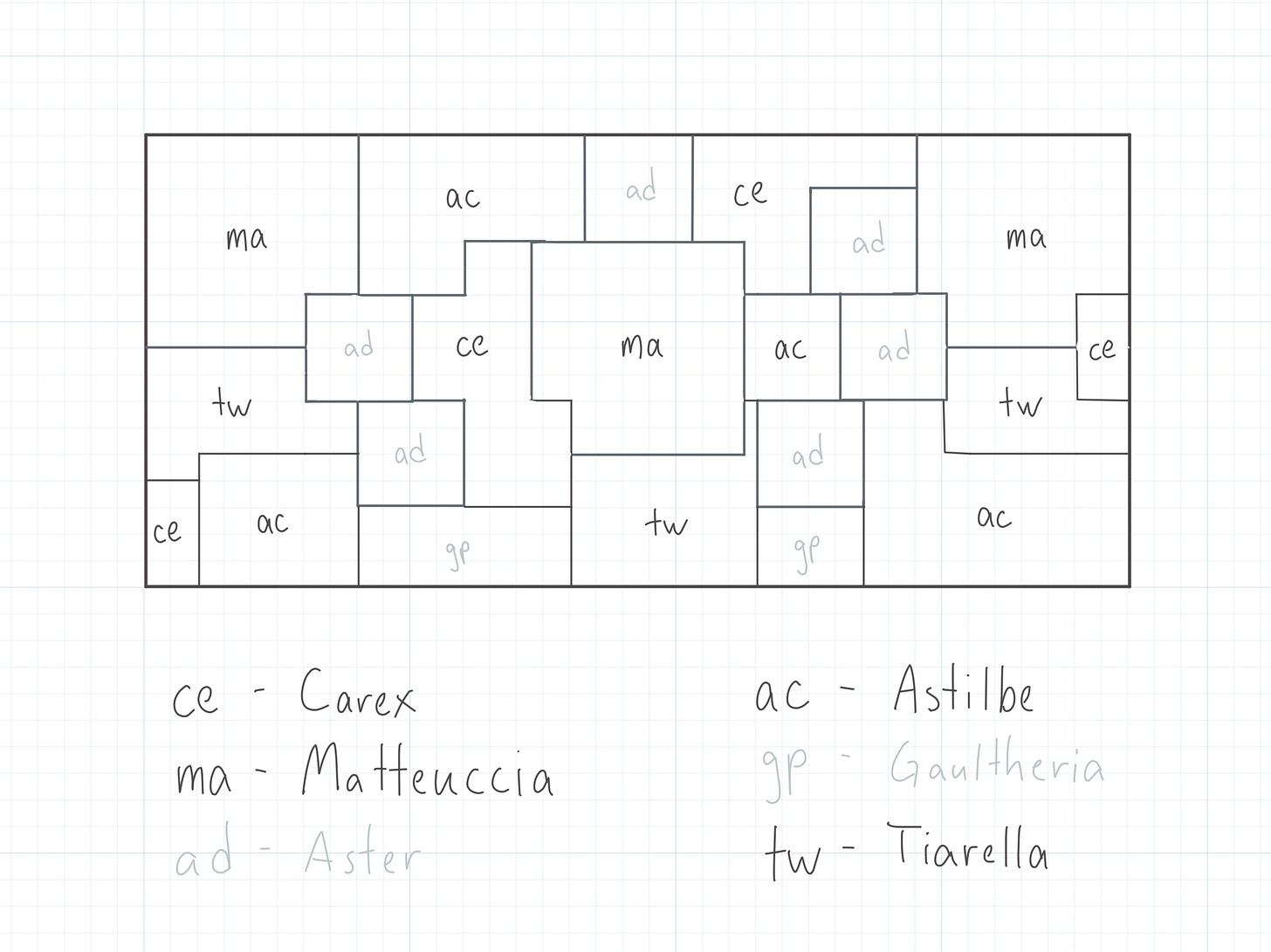
Fall
Fall’s inspiration came from the wooded area surrounding my house. Every year a profusion of white Asters start to flower at the end of August and into fall. I wanted to carry this feeling into the garden so that it connects to its surroundings. To do that, I used Aster divaricatus.
